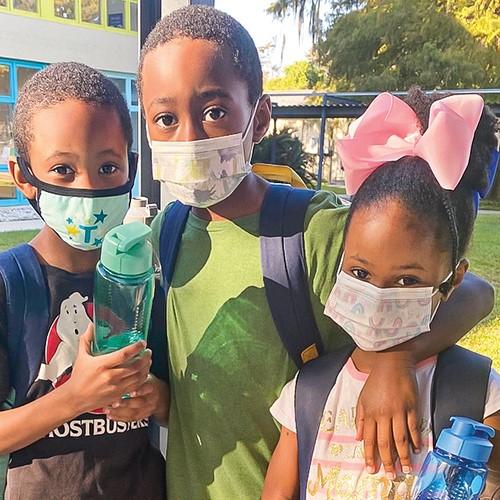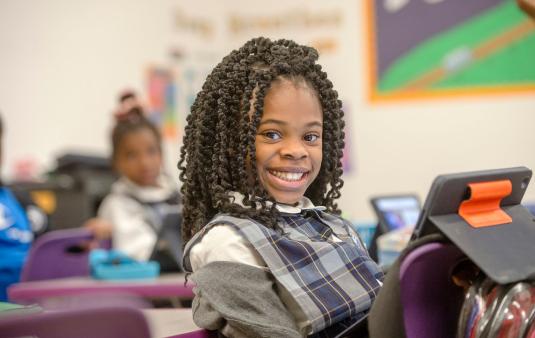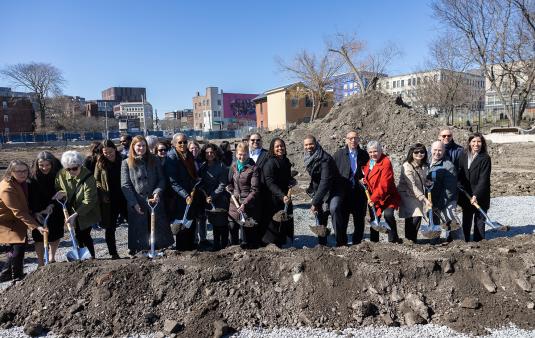Imagine being six years old and having most of your school time be outdoors. If you attend Tubman Montessori, that might be your experience. The open-enrollment campus, part of the larger Harriet Tubman Charter School and a member of the Crescent City Schools (CCS) network, spans pre-K to grade 2. A few years ago, the staff totally rethought what school could be—then, with the help of a $6.3 million loan from BlueHub, they acquired and renovated a campus, placing a focus on the outdoor spaces.
Located in the Algiers neighborhood of New Orleans, the 11-acre property previously belonged to the New Orleans Archdiocese. It already included a two-story classroom building and cafeteria, both of which have undergone renovation; the former chapel became Tubman’s gym and auditorium. The campus now serves 400 students, both those enrolled in Tubman Montessori and those in CCS’s Aurora Program, which provides intensive, specialized interventions for children with emotional and behavioral needs.
CCS is known for its transformative approach to education. Established in 2010 by veteran educators Kate Mehok and Julie Lause, its stated goal is to convert underperforming schools that serve disproportionately high percentages of students of color. These young scholars are succeeding; CCS’s growth scores are among the highest in New Orleans. In 2018, Harriet Tubman was recognized as both a Top Gains Honoree and an Equity Honoree by the Louisiana Department of Education — one of only two open enrollment schools to receive both honors.
Now, CCS has introduced its biggest transformation, centering the education at Tubman Montessori around outdoor play structures and spaces that serve as open-air classrooms. Although conceived in a world before COVID-19, the new campus opened in 2019, and was particularly valuable as students returned to onsite learning. The design, unique in the country, may just help change the definition of a classroom.


